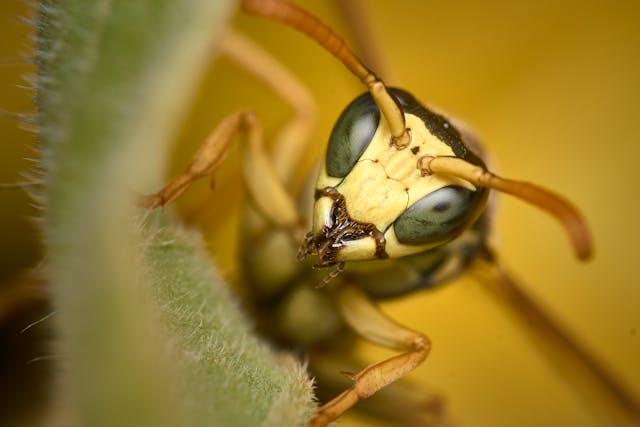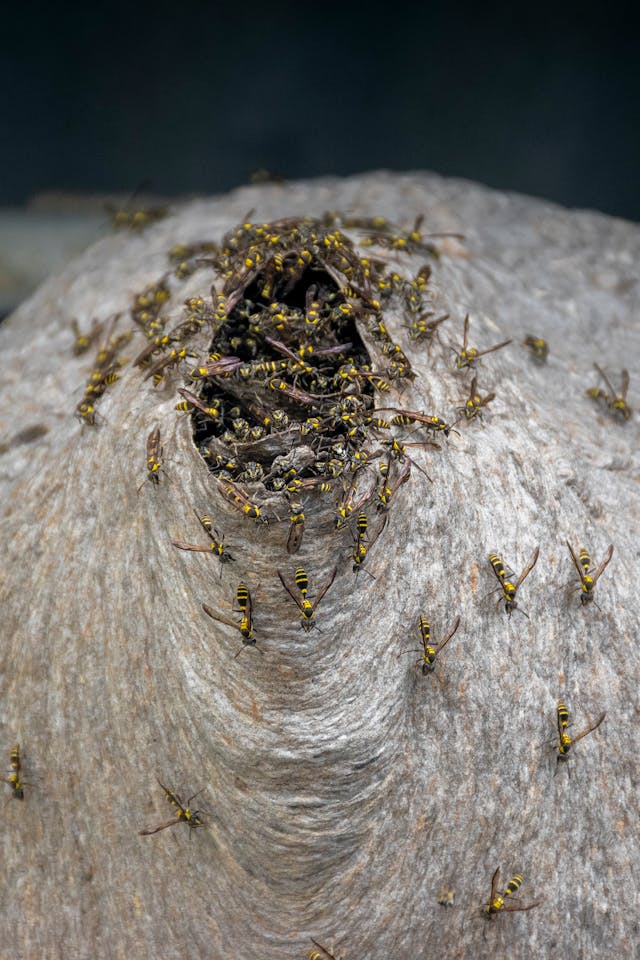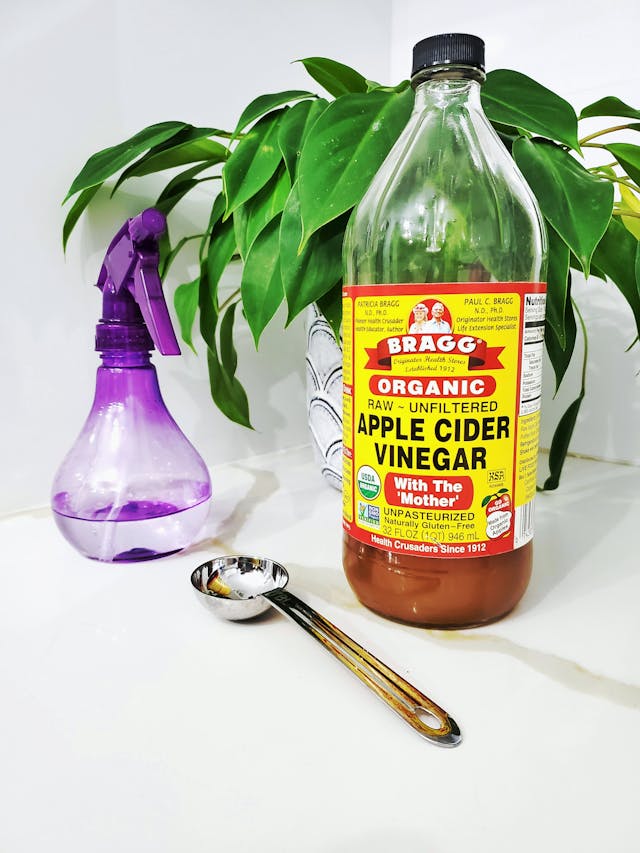Learning how to get rid of wasps starts with knowing how to identify them and their nests. This guide gives you the lowdown on spotting these pests, recognizing signs of an infestation, and choosing the best ways to eliminate them.
From DIY tips to professional pest control, learn how to tackle wasp problems safely and effectively. Don’t let wasps take over your summer—arm yourself with the right information and take action today!
Check it out now!
How to Identify Wasps
Unlike bees and ants, wasps sport sleek, smooth bodies and minimal hair, often in bold colors like black, yellow, white, or orange. And unlike bees, which sting only once, wasps can sting repeatedly thanks to their smooth stingers.

In Washington, the most common offenders are yellow jackets, hornets, and paper wasps:
- Yellow jackets and hornets are scavengers that love diving into your food and setting up nests in hidden spots like old rodent burrows and playground equipment.
- Paper Wasps are more laid-back unless provoked. They build their nests under eaves or on walls and follow less messy habits.
Wasps are most active during the hottest parts of the day and become a more significant nuisance as late summer approaches. These pests can be elusive, making their nests hard to spot and even harder to deal with.
By learning where they build their nests and their peak activity times, you can take proactive steps to manage or get rid of wasps before they disrupt your summer fun.
Signs of a Wasp Infestation
Wasps can turn from calm to combative in no time, making it crucial to handle them with care. Their stings are no joke—they can cause swelling and pain and, in severe cases, trigger allergic reactions that could be life-threatening.

Wasp stings can be painful and sometimes dangerous. Here’s what to do if you or someone else is stung:
- Remove the Stinger: If the stinger is still in your skin, carefully remove it with a pair of tweezers or the edge of a credit card. Typically, wasps won’t leave behind their stingers, so this may not be a worry.
- Clean the Area: Wash the sting site with soap and water to prevent infection.
- Apply a Cold Compress: Use a cold pack or cloth to reduce swelling and relieve pain.
- Monitor for Allergic Reactions: Be alert for signs of a severe allergic reaction, such as difficulty breathing, swelling of the face or throat, or dizziness. Seek medical help immediately if any of these symptoms occur.
While wasps don’t usually sting without a good reason, they’ll defend their nests aggressively if they feel threatened. Keep an eye out for signs of an infestation, such as:
- Wasps buzzing around your property
- Nest sightings, old or new
- Chewed wood, which might also hint at termites or ants
- Small holes or tunnels in wooden surfaces
If you spot wasps, keep everyone, including pets, indoors and alert your neighbors. Avoid swatting at them; wasps release an alarm pheromone that makes them more aggressive, so the more you disturb them, the more likely they are to attack.
For a hassle-free solution, contact a professional who can safely manage and eliminate wasps from your property.
How to Get Rid of Wasps in Washington
When faced with a wasp infestation, DIY solutions can offer a temporary fix, but they’re not always the most reliable route. Here are some popular DIY methods:
- Soda Bottle with Apple Cider Vinegar: This simple trap lures wasps with the sweet smell of vinegar.
- Herbs and Essential Oils: Clove, lemongrass, and geranium oil, with their strong scents, can deter wasps.
- Peppermint and Water Mixture: To make a repellent spray, combine 1 tablespoon of peppermint oil with 4 cups of water.
- Fake Nests: Wasps are territorial, so hanging a fake nest can deter them from setting up camp nearby. You can buy these online or make your own from paper bags.
- Blowing or Using a Fan: Creating a headwind can make it harder for wasps to fly near you.

These methods might offer temporary relief, but they come with risks. Improper application or handling of these DIY solutions can aggravate the wasps, making the situation worse. In contrast, professional pest control teams have the expertise, tools, and experience to effectively handle wasp problems.
At Sentinel Pest Control, we specialize in managing Washington wasp infestations with precision and safety. Our trained technicians use advanced techniques and equipment to locate and eliminate nests, ensuring a thorough job.
Unlike DIY methods, which can sometimes backfire, our professionals know how to get rid of wasps with ease. We assess the infestation, apply targeted treatments, and provide ongoing monitoring to keep your home safe.
Dealing with aggressive wasps is not something you should tackle alone. Trust our expert team to handle the problem efficiently and effectively. Our specialists are equipped to provide the best solution, ensuring peace of mind and a wasp-free environment. Don’t risk worsening the situation—contact Sentinel Pest Control for professional and reliable service!

